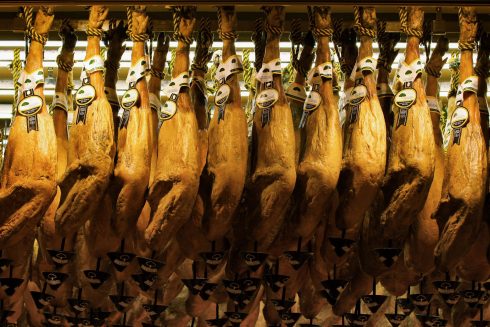FORGET this year’s sherry bar craze in London. In recent years sherries have crept back onto the wine lists at restaurants around the world.
This is no surprise considering sherry with food is a match made in heaven – well a gourmand’s idea of heaven at least.
This is a wonderful development, as for a long time sherry had fallen out, was divorced even, with the foods it complements so beautifully. Luckily for gourmands and no-so-gourmands, there has been something of a renewal of vows. Sherry and food are definitely getting married again!
Thanks to sherry producers like Rey Fernando de Castilla and Equipo Navazos, who make sherries in the way they did when sherry became famous in the first place, there is growing interest. There are some real treasures hidden away in the sherry bodegas just waiting to be unlocked!
This marvellous drink is made mostly from a single grape variety, Palomino along with Pedro Ximenez and Moscatel, which are used to make sweet wines. Time, nature and a bit of expert attention morph the wines from these three varieties into over a dozen different styles of sherry, ranging from bone dry to super-sweet; pale green to almost black, and everything in between.
There are two broad methods used to age sherry inside the barrel (or butt as it’s known in Jerez): Either under a layer, or veil if you are feeling literary, of a special blend of yeasts called ‘flor’, which float on the surface of the wine sealing it off from the atmosphere or without flor and exposed directly to air.
The flor wines are fortified to a precise level which encourages the growth of the special yeast, blocking out oxygen from the wine and working its magic on the liquid beneath. These wines are known as a Fino (or Manzanilla if they are aged in the town of Sanlucar de Barrameda). Wines destined for ‘oxidative’ ageing, so fully exposed to air and thus oxygen, are fortified more than Fino, preventing the formation of flor. These are the Olorosos. A third category, the Amontillados, start off ageing under flor and end up open to the air.
Something common to all sherry is the solera system: An incredibly simple ageing method which defies concise explanation! It’s main advantage is that it irons out differences between vintages, resulting in a consistent wine from year to year.
The Finos and Manzanillas are an excellent accompaniment to all seafood but it is with tapas that they really come into their own – chopping and changing from meat, to fish to vegetable nibbles is taken in their stride, Fino or Manzanilla prepares the palate for each new bite and complements it too. These flor wines also have a unique advantage, they can marry with acidic dishes: Just try Fino or Manzanilla with some anchovies cured in vinegar, and you’ll see. No other wine can manage this with such aplomb! .
The Amontillados are more suited to lighter meats, like roast chicken or pate and the Olorosos go well with fuller flavoured dishes such as chorizo or smoked bacon.
For the dry sherries, this rule of thumb seem to work well:
If it swims – Fino
If it flies – Amontillado
If it runs – Oloroso








